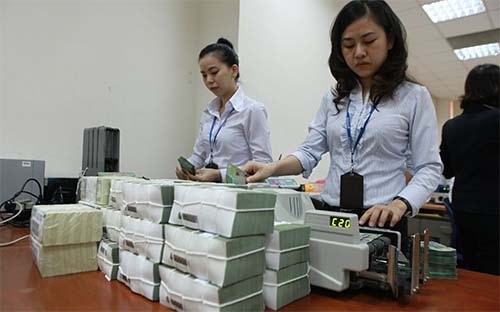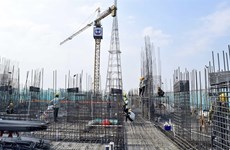Banks’capital adequacy in danger of plunging
 State Bank of Vietnam statistics show that the average capital adequacy ratio (CAR) of the banking sector has been consistently falling since the beginning of this year. (Source: VNA)
State Bank of Vietnam statistics show that the average capital adequacy ratio (CAR) of the banking sector has been consistently falling since the beginning of this year. (Source: VNA)Hanoi (VNS/VNA) - The State Bank of Vietnam (SBV)'s statistics show that the average capital adequacy ratio (CAR) of the banking sector has been consistently falling since the beginning of this year.
It had dropped from 12.84 percent at the end of last year to 12.66 percent at the end of May and this despite not including in the list some lenders with seriously eroded equity.
CAR is expressed as a percentage of the bank’s capital to its risk-weighted assets and is one of the main metrics used to promote the stability and efficiency of financial systems.
The SBV has issued a circular according to which banks must maintain a CAR of at least 8 percent starting from 2020.
The new circular will replace Circular 13/2010/TT-NHNN that stipulates a minimum CAR of at least 9 percent.
According to a recent report from the National Financial Supervisory Commission (NFSC), the minimum CAR of the entire banking system this year is estimated at 11.3 percent.
However, experts warn that when BASEL II norms are applied, banks’ CAR will plunge due to an increase in the amount of their risky assets.
The NFSC report said the CAR of the big four State-owned lenders -- Vietcombank, BIDV, Vietinbank, and Agribank -- stands at nearly 9 percent but falls to below 8 percent when BASEL II standards are applied.
Analysts said it is because their credit has increased much more rapidly than their equity.
In 2016, the sector’s total assets went up by 16 per cent but chartered capital by only 6.11 percent.
In the first five months of this year, credit growth was 6.63 percent while legal capital increased by only 2.28 percent.
For instance, BIDV’s first half results show that its chartered capital was up marginally while its loans and investments rose by 11.56 percent.
Vietcombank’s legal capital was unchanged during the first half of this year at 35.977 trillion VND (1.58 billion USD).
Vietcombank’s equity increased slightly during the first half of this year to 52.109 trillion VND while its outstanding loans soared by 13.1 percent 534.108 trillion VND.
As a result its CAR fell from 11.13 percent last year to 9.81 percent as of June 2017.
Vietcombank has found it difficult to increase its capital by selling stakes to foreign partners or issuing more shares in the market.
Neither tier 1 or core capital nor tier 2 or supplementary capital has been augmented.
In the face of the situation, experts said Vietcombank’s credit growth would be curtailed to ensure its CAR remains at over 9 percent as required by the SBV.
This is also the reason why the NRSC has warned that if State-owned banks do not increase their capital their consumer credit plans as well as the whole sector’s will be badly affected.
To resolve this situation, many banks will have to find ways to hike their chartered capital but also achieve the year’s credit growth target of 21 percent.
Experts warn however it will be difficult to increase the capital at this difficult juncture.
They point out that the high bad debt levels mean investors are apprehensive about putting their money in banks.-VNA












